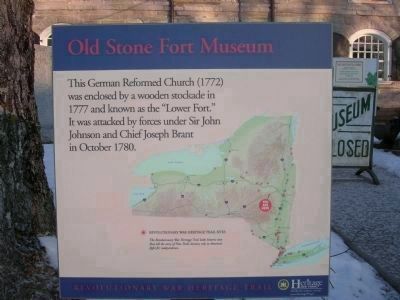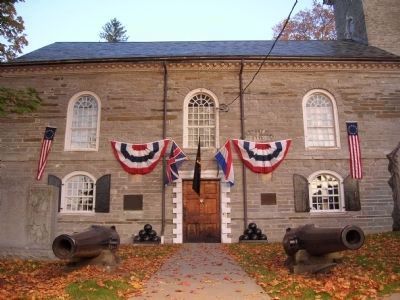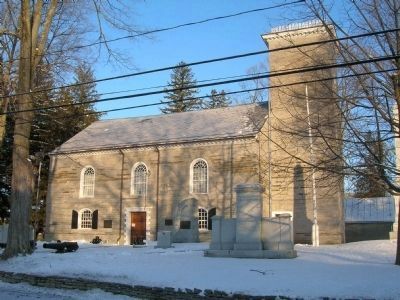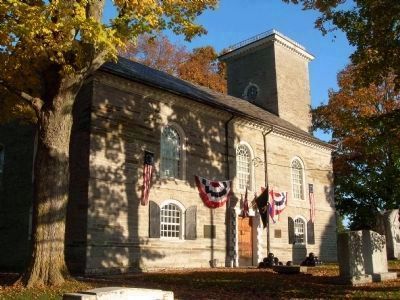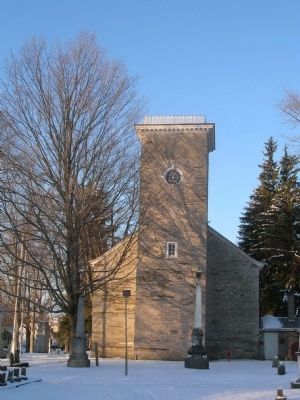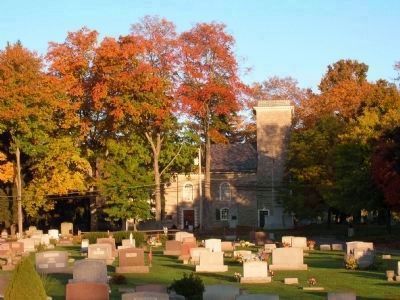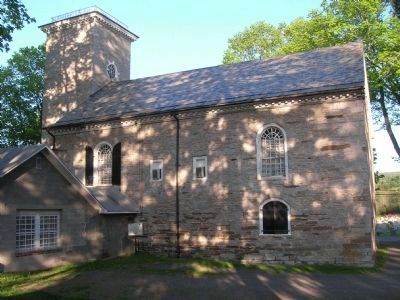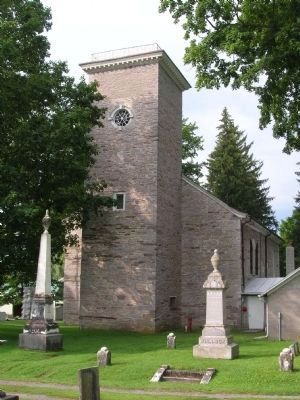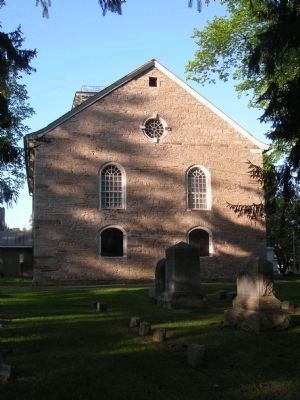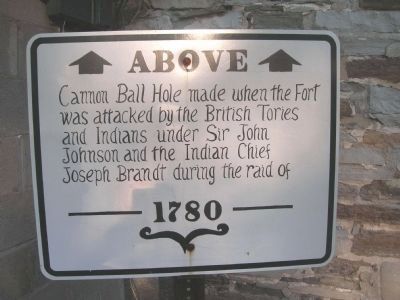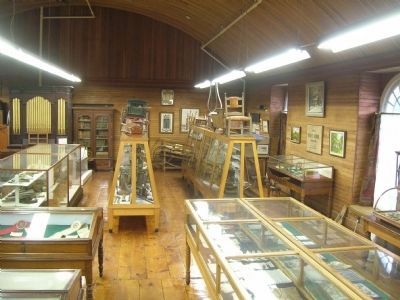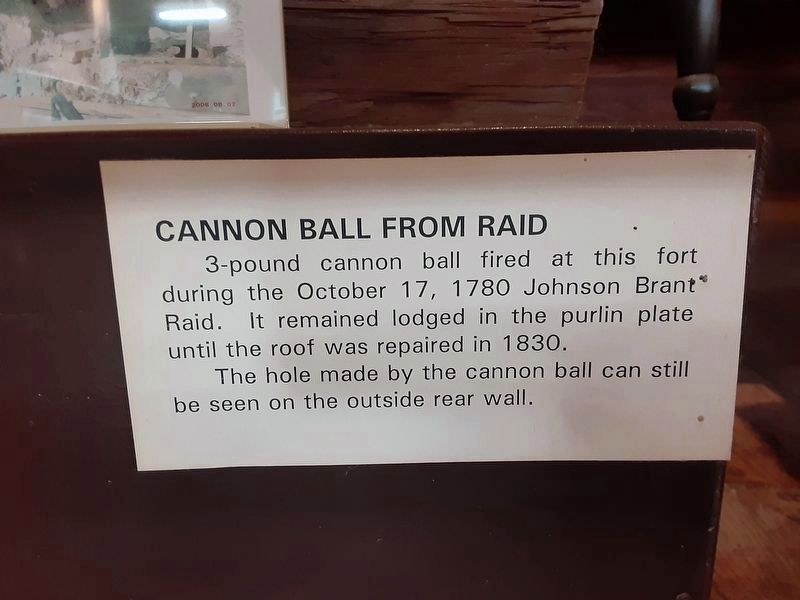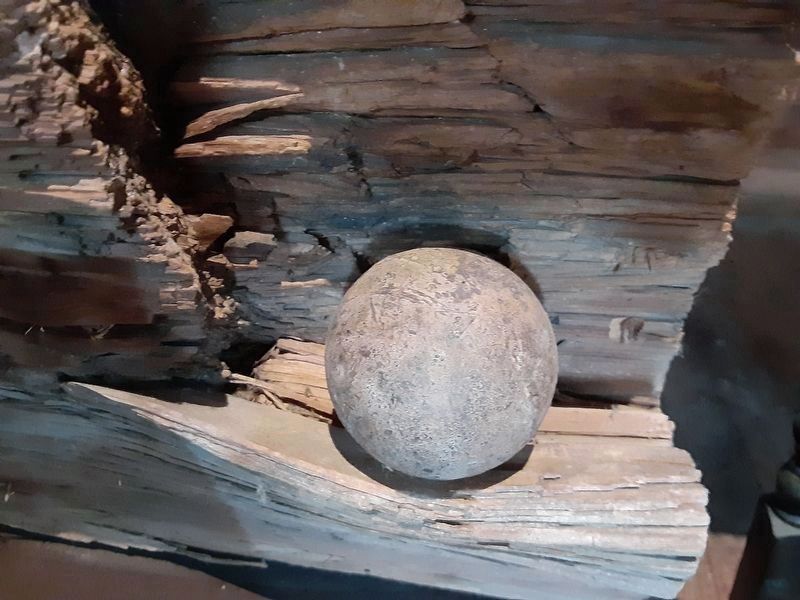Schoharie in Schoharie County, New York — The American Northeast (Mid-Atlantic)
Old Stone Fort Museum
— Revolutionary War Heritage Trail —
Inscription.
This German Reformed Church (1772)
was enclosed by a wooden stockade in
1777 and known as the "Lower Fort."
It was attacked by forces under Sir John
Johnson and Chief Joseph Brant
in October 1780.
Erected by Heritage New York.
Topics. This historical marker is listed in these topic lists: Churches & Religion • Notable Buildings • Patriots & Patriotism • War, US Revolutionary. A significant historical month for this entry is October 1780.
Location. 42° 40.625′ N, 74° 18.109′ W. Marker is in Schoharie, New York, in Schoharie County. Marker is on Fort Road, on the right when traveling south. This Revolutionary War Heritage Trail Marker is posted beside the sidewalk leading to the museum door from the road. Touch for map. Marker is at or near this postal address: 145 Fort Road, Schoharie NY 12157, United States of America. Touch for directions.
Other nearby markers. At least 8 other markers are within walking distance of this marker. War in Schoharie County (a few steps from this marker); Revolution in the Mohawk Valley (a few steps from this marker); David Ellerson (a few steps from this marker); Colonel John Harper (a few steps from this marker); David Williams Memorial (within shouting distance of this marker); Col. Peter Vroman (about 400 feet away, measured in a direct line); Stone Church Parsonage (about 800 feet away); Bridge No. 1 (approx. 0.2 miles away). Touch for a list and map of all markers in Schoharie.
Regarding Old Stone Fort Museum. The Old Stone Fort was originally constructed as the Reformed Dutch Church in 1772. The building remains a rare and distinguished example of vernacular stone masonry architecture of the colonial period in the Schoharie Valley. Fortified during the Revolutionary War, the church building became the principle component of the "Lower Fort", a frontier stockade and a refuge for Schoharie Valley settlers from 1778 to 1785. On October 17 1780, the stone church withstood the direct attack by Loyalists and Indian allies led by Sir John Johnson. The building functioned as a church until 1845. In 1858, it became a state arms storage facility. Since 1888, the Schoharie County Historical Society has preserved the Old Stone Fort as an historic building housing an important collection of regional historical artifacts.
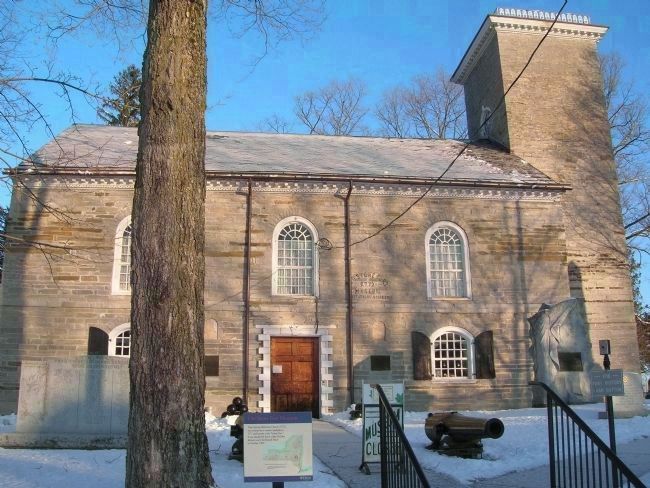
Photographed By Howard C. Ohlhous, March 29, 2008
2. Old Stone Fort Museum Marker
The Old Stone Fort Museum complex celebrates and preserves the rich, historic legacy of New York's beautiful Schoharie Valley. Buildings include an early 1700's home, 1780's Dutch barn, 1830's law office and 1890's one-room school as well as the 1772 stone church that was fortified and attacked by Tory, British & Indian forces in 1780.
Also see . . . About the Old Stone Fort. (Submitted on November 22, 2009, by Howard C. Ohlhous of Duanesburg, New York.)
Additional keywords. Burning of the Valley Raid
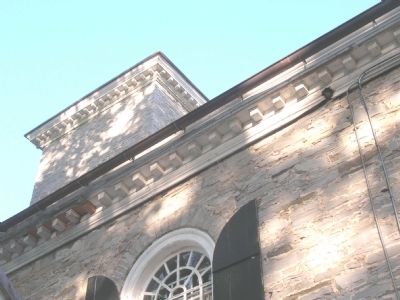
Photographed By Howard C. Ohlhous, June 13, 2008
12. Canon Ball Damage
The hole in the trim moulding in the upper right was made by a 3-pound cannon ball fired at the fort during the October 17, 1780 raid. The cannon ball remained lodged in the purlin plate untill the roof was repaired in 1830. The canon ball is now on display in the museum.
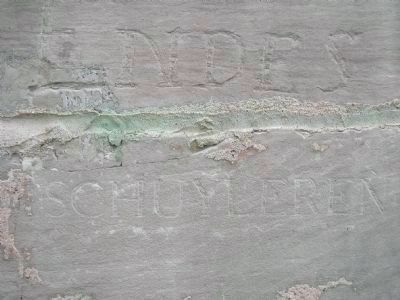
Photographed By Howard C. Ohlhous, June 18, 2008
14. Founders Names
The stone for the chuch was taken from several local quarries in 1772. The thick walls were laid up by the Schoharie settlers who were overseen by a master mason, John Schuyler. The names of 49 settlers who helped build the church are recorded as chiseled inscriptions visible on the exterior stone walls. Several black spaces formerly bore the names of others who remained Loyalist during the Revolutionary War; these were subsequently chiseled away by their former Schoharie neighbors.
Credits. This page was last revised on September 18, 2022. It was originally submitted on November 22, 2009, by Howard C. Ohlhous of Duanesburg, New York. This page has been viewed 2,008 times since then and 46 times this year. Photos: 1, 2, 3, 4, 5, 6, 7, 8, 9, 10, 11, 12, 13, 14. submitted on November 22, 2009, by Howard C. Ohlhous of Duanesburg, New York. 15, 16. submitted on September 18, 2022, by Scott J. Payne of Deposit, New York. • Kevin W. was the editor who published this page.
